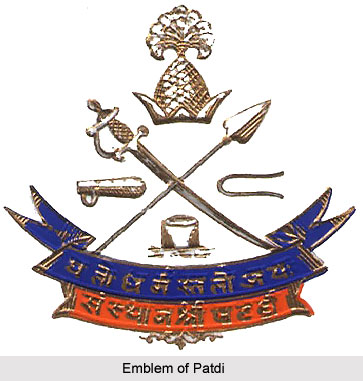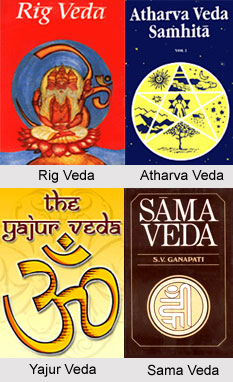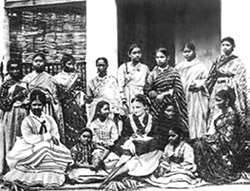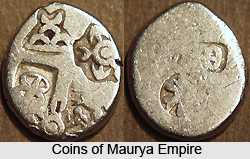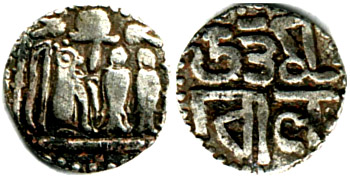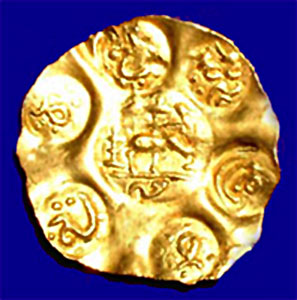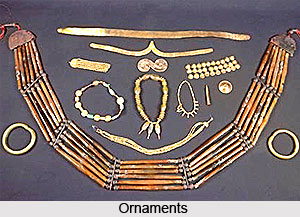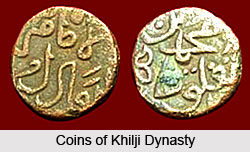Doubts about Wealth and Harm which has been mentioned in Chapter VII of Book IX in Arthashastra, enlists some kinds of wealth which usually come at the way of success for the conqueror. Arthashastra claims that whenever wealth which is obtained increases enemy`s prosperity or which is repayable to the enemy, or which causes loss of men and money, is dangerous wealth. Wealth which is enjoyed in common by neighbouring kings and which is acquired at their expense; or wealth which is asked for by an enemy; or wealth which is seized like one`s own property; or wealth which is acquired in the front and which causes future troubles or provokes an enemy in the rear; or wealth which is obtained by destroying a friend or by breaking a treaty and which is therefore detested by the Circle of States, are the varieties of dangerous wealth. The wealth which causes fear from one`s own people or from the enemy is known as provocative wealth; and when it is in connection of to kings which raises doubts regarding its consequences then it is wealth with doubtful consequences.
Doubts about Wealth and Harm also includes six varieties of harmful wealth which include wealth productive of wealth, wealth productive of nothing, wealth productive of harm, loss or harm productive of wealth, sustenance of harm for no profit, and harm productive of harm. Destruction of enemy in the front resulting in destruction of enemy in the rear is termed as wealth productive of wealth; while wealth acquired by helping a neutral king is called wealth productive of nothing; reduction of the internal strength of an army is wealth productive of harm; helping a neighbouring king of an with men and money is harm productive of wealth; withdrawal after encouraging or setting a king of poor resource against another is harm productive of nothing; while turning inactive after causing excitement to a superior king is harm productive of harm. Along with this Arthashastra also mentions a number of situations when the wealth of the conqueror can be demarcated within these types.
Doubts about Wealth and Harm mentions that whenever the surrounding situations are conducive to wealth it is known as wealth from all sides; and whenever acquirement of wealth from all sides is obstructed with the enemy in the rear, it takes the form of dangerous wealth involving doubtful consequences. In both the instances the conqueror can win success with the help of the friend and the friend of the rear enemy. Whenever there is a reason for apprehending fear from the enemy it takes the colour of dangerous troubles and whenever the prospects of acquiring wealth is obstructed from all sides it enters into dangerous wealth; when there is apprehension of harm from one quarter as well as from the other side , this is called wealth in danger from both sides; if there is prospect of danger from all sides then it is said that wealth is dangerous from all sides which can be incurred only with the help of a friend or ally; whenever there is a prospect of wealth from one side and apprehension of attack from another side it is called the situation beset with wealth and harm; when there is apprehension of harm from one side and prospects of acquiring wealth from another side involves doubt , then the situation is termed as doubt of harm and wealth from two sides; when there is prospects of wealth from one side and apprehension of doubtful harm from other side then it is called a doubtful situation of harm and wealth from all sides as well as doubtful situation from both sides.
Doubts about Wealth and Harm further mentions that wealth, virtue, and enjoyment form the aggregate of all the three kinds of wealth; harm, sin and grief are the three forms of harm; and wealth or harm, virtue or sin, and enjoyment or grief are the aggregate of three kinds of doubts which remain perpetual which the conqueror is supposed to check before they approach a warring situation. Regarding success the conqueror is supposed to apply any of the strategic steps which include the methods of conciliation and gifts, sowing seeds of dissension, or sowing the seeds of dissension and coercion. In case of light and grave dangers together apprehend then alternate methods can also be applied. when only one method and no other method is applied then one particular means is applied; but when choice is made between this or that method ,then alternative means is applied; when any of the methods are applied then all means are applied. Though the conqueror is informed all possible situations which he is supposed to overcome as an invader , still to be unbitten in success he supposed to be alert about the providential calamities which can cause loss .
Thus, the chapter mainly intends to caution the conqueror about the doubts as well as the dangers faced in acquiring wealth and deposing one`s enemy.



